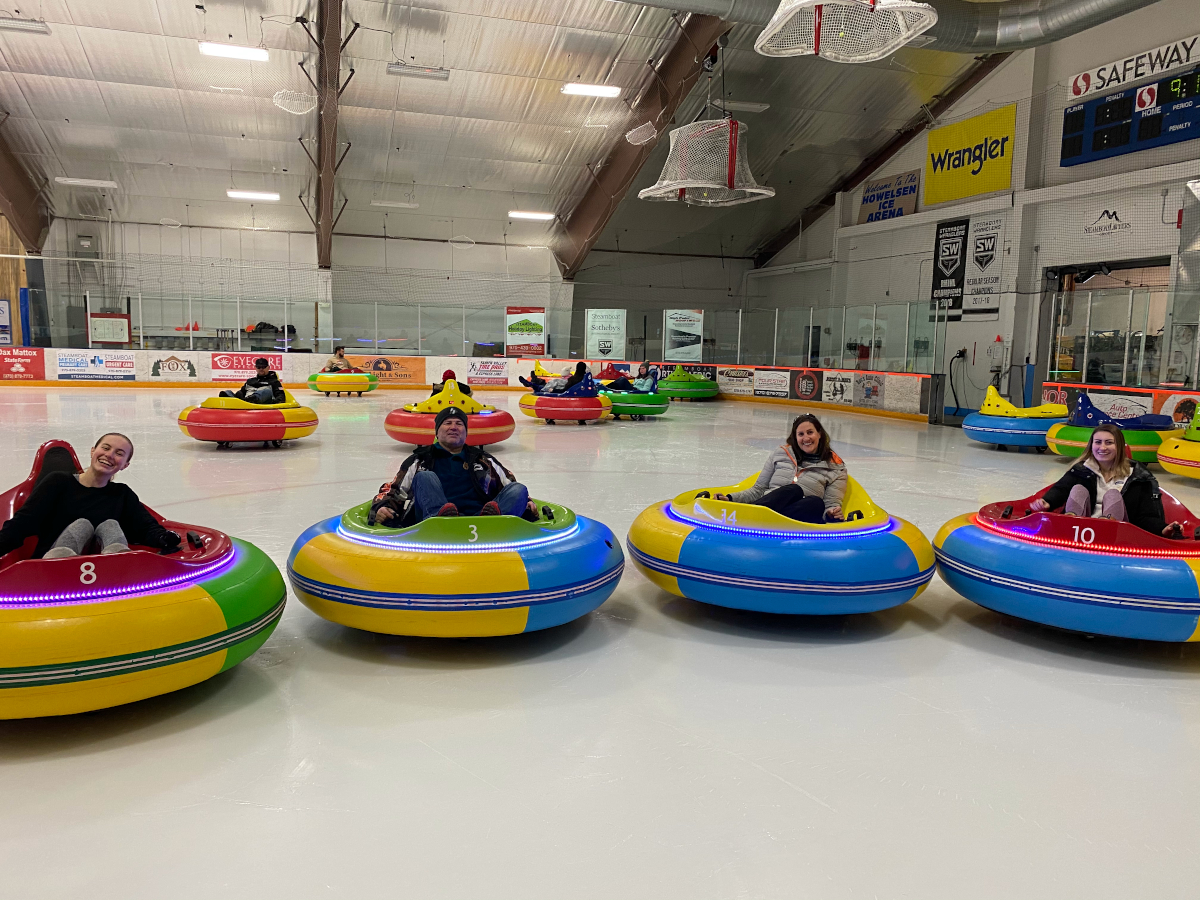How to Navigate a Figure Skating Session Like a Pro!
If you have ever set foot in an ice rink you know that the ice can be full of high-level skaters zooming by, little kids mindlessly wandering, and skate blades flying everywhere. Okay okay, not all sessions end up like this but you get the idea. Navigating a figure skating session can be overwhelming and scary, especially for a beginner. Lucky for you I am here to help.
These simple tips will help you navigate the ice like a pro so you can have a stress-free, productive session.
General Direction of Travel
Let’s start plain and simple with the direction of general travel around the rink. If all you were to do for an entire session is skate laps around the ice, you would want to be skating in a counterclockwise direction. This will be the default flow of the session so when in doubt skate counterclockwise. This applies to a public skating session as well.
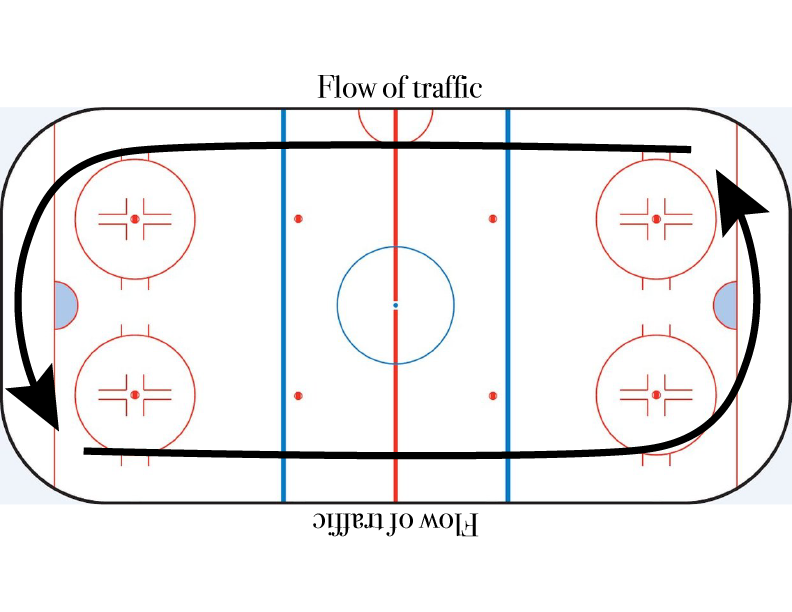
Exceptions: While it is important to know this as the general rule of thumb, there are a few exceptions.
- Programs: Skating programs can travel in any direction they please and it’s generally encouraged! Therefore, it is unlikely they will be consistently following this traffic pattern.
- Moves in the Field: Certain testing patterns such as the Pre-Preliminary stroking pattern requires the skater to perform a sequence of moves in both clockwise and counterclockwise directions.
- Lutz Patterns: We will talk more about these later but some Lutz entry patterns will be traveling in the opposite direction.
- Leftys: If you skate as a lefty you are going to find out quite fast that your jump patterns will travel in the wrong direction more often than not… sorry. We still love you though.
Getting Familiar With the Layout
Before we get into the jump and spin patterns let’s take a look at the ice rink layout. If we take a look at a blank ice rink layout, you will notice that there are 5 red circles. Two on either end of the rink and one in the center of the ice. These circles are going to be really helpful when learning which areas of the ice to perform your elements, so keep them in mind as we go through each element.
Although these circles are an incredible place to start, it is important to note that once you start competing at higher-level competitions, you will no longer have them as a guide. Most big competitions will just have plain ice surfaces with their competition logo and usually a few sponsor logos as well. So use them as much as you need to learn your way around the rink, but don’t make them your only option.
Jump Patterns and Spins
The jump patterns are sectioned off into 3 main categories and areas of the ice. Edge jumps (Salchow, Loop, Axel), Toeloop and Flip, and finally Lutz.
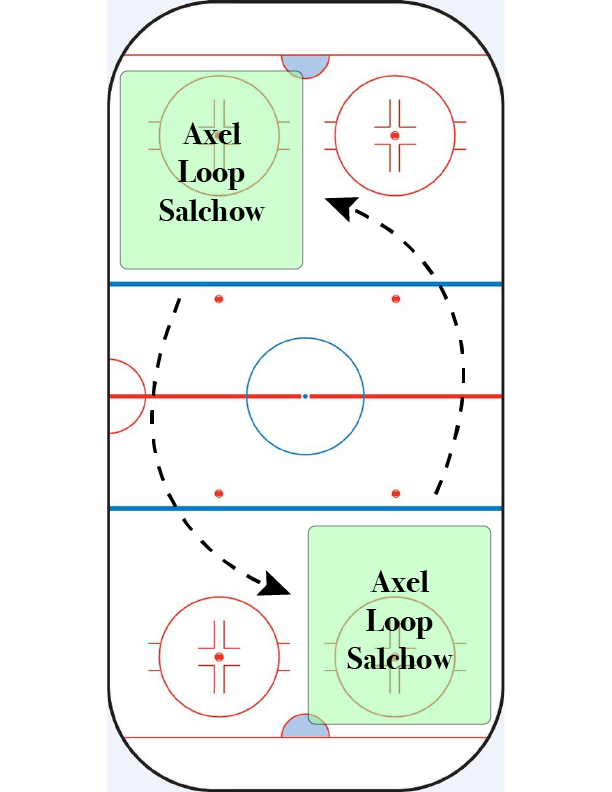
Edge Jumps
These 3 jumps are usually practiced in the opposite corners pictured in green, one at either end of the rink.
The jump itself is usually performed in and around the circles, but it is important to remember that the entrance patterns into the jumps will start farther up. They will typically follow the counterclockwise direction of travel, skating along the sides of the middle circle.
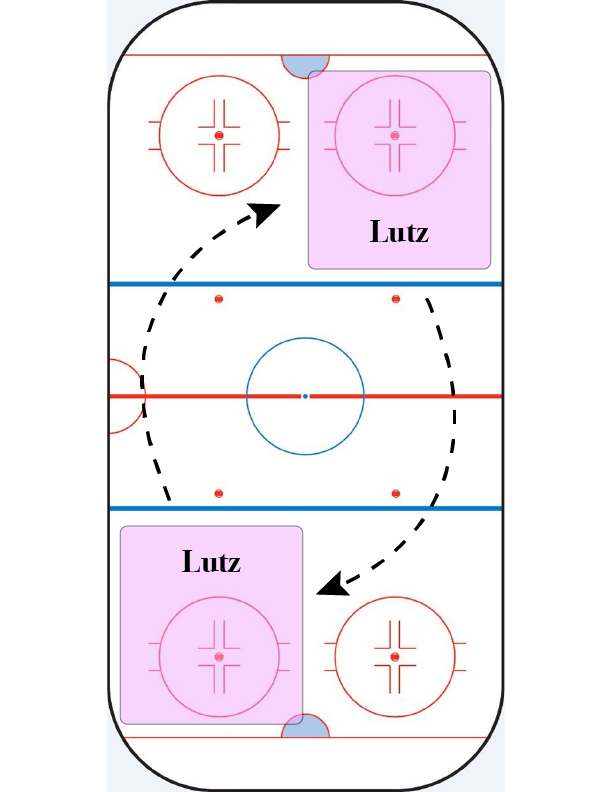
Lutz Corners
The two opposite corners pictured in pink are considered the Lutz corners, one on each end of the rink. The entry steps to gain speed into this jump are usually skated on a curved pattern, clockwise around the rink. This will be in the opposite direction of general traffic, so it is very important to look at where you are going when executing this jump.
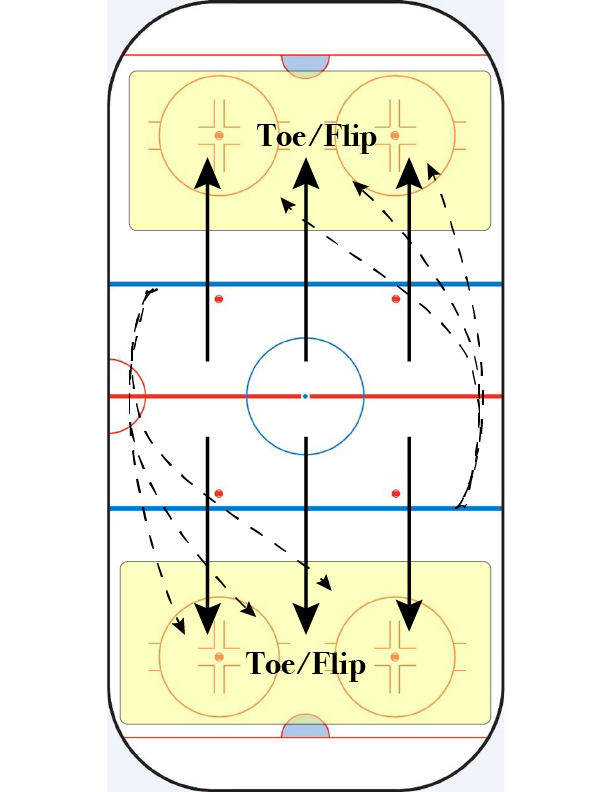
Toe Loop and Flip
The jumps flip and toe loop are performed on either end of the rink. In the diagram you can see the arrows indicate many different entrance patterns. Some patterns will follow similar entrances to those we discussed for edge jumps, following the edges of the circle in the general direction of travel (indicated by the dotted arrows). Other skaters may take a straighter entrance pattern for these jumps which are indicated by the solid arrows. Patterns can vary greatly depending on the skater, but these are just a few examples of the most common ones.
Spinning
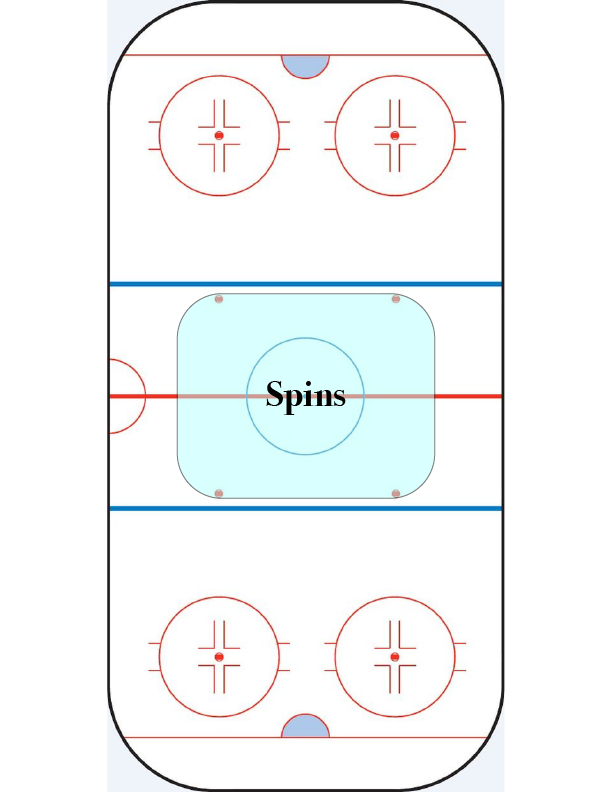
Short answer… the middle.
When practicing spins, the best place to do them is in the ice’s center circle or somewhere between the 2 blue lines. If you refer back to the jump patterns we just went over, you’ll notice that most jump entrances will be skating around this circle making it the best “out-of-the-way” place to spin. This will allow the jump patterns and flow of traffic to continue around you.
For the lefties…
If you skate as a lefty your jump patterns are going to pretty much be the exact opposite of everything I just said. Naturally, this can be quite challenging at times, due to opposing the general flow of traffic. The best thing you can do is just be aware of your surroundings. It’s a fast-paced environment but with the proper confidence and awareness, you can still have an amazing session!
Moves In The Field and Ice Dance Patterns
Both moves in the field and ice dance tests have set steps and patterns that a skater must follow for each test level they would like to complete. These patterns can curve and zigzag any which way around the rink. At every ice rink, you will likely see skaters practicing either test, although moves in the field are much more common. The sooner you start getting familiar with a few of the patterns, the more comfortable you will feel around other skaters performing them.
A couple of ways to familiarize yourself with these types of patterns are:
- Observe others practicing them (on a session, on youtube, etc.)
- Look over the testing patterns on paper
- Start practicing and testing them yourself
Once you start to recognize specific patterns, it will be easier to judge which direction another skater might be headed in.
Programs
Each skating program is very unique and will be skated differently by every skater. Similar to the moves in the field and dance patterns, one of the best ways to navigate this situation is to familiarize yourself with your peer’s programs. If you are skating with the same skaters often you will start to learn who has which program music. You don’t have to memorize or learn the whole thing, but just take note of certain areas that may cause a traffic issue to the paths you regularly skate. For example, if you notice a skater gets really close to the boards in one section of their program, that might be a spot you steer clear of when their music is playing. It can also be helpful to simply learn who has which piece of music so when a song is played on the loudspeaker you will know who to watch out for.
Most skaters will get a new program every year so this is an ongoing thing to be aware of.
Most Importantly: Be Attentive and Aware
To sum it all up… be aware of your surroundings! Look in the direction you are traveling, take note of which ways other skaters are traveling, be kind and confident, and don’t forget to have fun. No matter what level of skater you are, you hold equal rights to skate on the ice as everybody else. As long as you are considerate of others and pay attention, you should have no problems at all!
Wrapping it up
Now that you know what to expect, I hope you can feel more confident than ever navigating your next figure skating session!
Below is a free resource for you to use at your convenience! Download it, print it out, or save it for later!
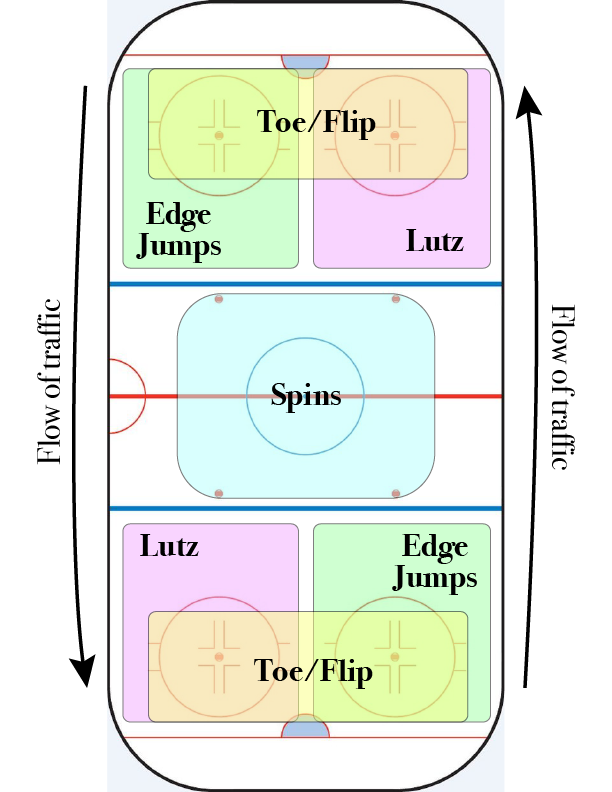
FREE Resource!
Click HERE to get your FREE copy of this Ice Rink navigation sheet!
Thanks for reading!
XOXO, Rebecca
You May Also Like
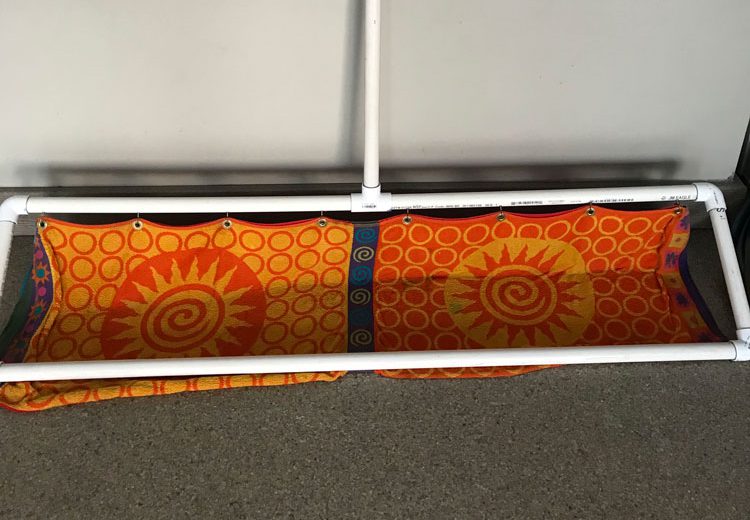
Building Our Homemade Zamboni
January 21, 2018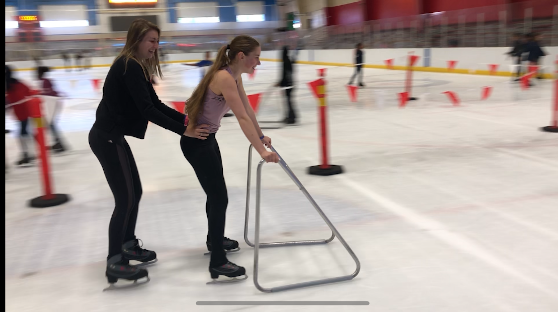
Trying Rentals Skates in Hawaii
December 11, 2019